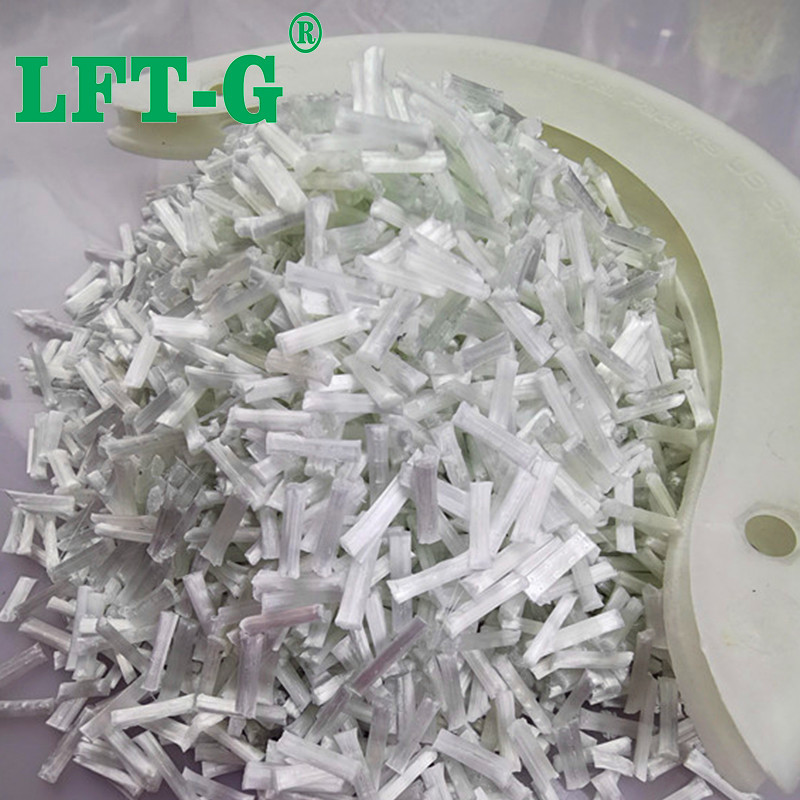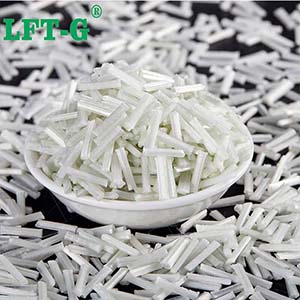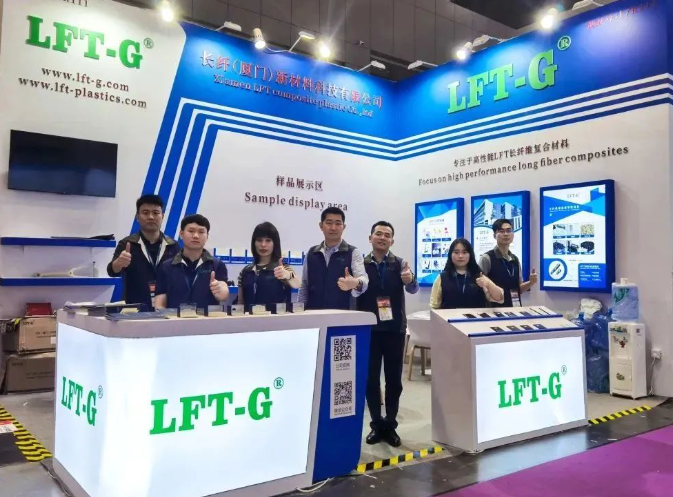neuer Blog


Zusammenfassungen
9,10-Dihydro-9-oxa-10-phospha-phenanthren-10-oxid (DOPO) wurde als Flammschutzmittel für die Herstellung von mit Massenanteil 20 % Langglasfasern (LGF) verstärktem thermoplastischem Polyurethan/Polybutylen verwendet Es wurden flammhemmende Terephthalat/DOPO-Verbundwerkstoffe (20 % LGF/TPU/PBT/DOPO) hergestellt und die Flammhemmung sowie die rheologischen und mechanischen Eigenschaften dieser untersucht Flammhemmende Verbundwerkstoffe wurden untersucht. Die Ergebnisse zeigten, dass die flammhemmenden Eigenschaften der flammhemmenden Verbundstoffe mit der Erhöhung der DOPO-Dosierung allmählich verbessert wurden und der Flammschutzgrad der flammhemmenden Verbundstoffe V-0 war und der endgültige Sauerstoffindex 24,5 % betrug, wenn der DOPO-Massenanteil betrug betrug 9 %. Der Flammschutzmechanismus flammhemmender Verbundwerkstoffe besteht hauptsächlich aus Gasphasen-Flammschutzmitteln, ergänzt durch kohäsive Flammschutzmittel. Die mechanischen Eigenschaften der flammhemmenden Verbundwerkstoffe nahmen mit steigendem DOPO-Gehalt ab.
Schlüsselwörter
Polyurethan
Polybutylenterephthalat
Lange Glasfaser
Flammhemmende Eigenschaften
rheologisches Verhalten
Einführung
Polybutylenterephthalat (PBT) verfügt über hervorragende mechanische Eigenschaften, thermische Stabilität und Dimensionsstabilität und wird häufig in der Elektronik, Automobilindustrie und im Transportwesen eingesetzt. Allerdings ist PBT-Basisharz leicht zu verbrennen und es ist schwieriger, während der Verbrennung eine Holzkohleschicht auf der Oberfläche zu bilden, was mit einem schwerwiegenden Schmelztropfenphänomen und einer leichten Flammenausbreitung einhergeht, was seine Anwendung einschränkt. Daher ist es notwendig, eine flammhemmende Modifizierung von PBT durchzuführen. 9,10-Dihydro-9-oxa-10-phospha-phenanthren-10-oxid (DO PO) ist ein wirksames nichthalogeniertes Phosphor-Flammschutzmittel, das weit verbreitet ist Wird in der Forschung zu flammhemmenden Materialien auf Polymerbasis eingesetzt. Angesichts der steigenden Nachfrage nach Produktleistung müssen flammhemmende PBT-Verbundwerkstoffe verstärkt werden, und die kostengünstige Verstärkungsmethode ist hauptsächlich glasfaserverstärktes (GF) PBT. Im Vergleich zu kurzem GF haben mit langem GF (LGF) verstärkte flammhemmende PBT-Verbundwerkstoffe die Vorteile einer hohen Festigkeit, eines hohen Moduls, einer guten Dimensionsstabilität usw. Im Folgenden wird DOPO als Flammschutzmittel verwendet, bei dem es sich um ein hocheffizientes Halogen handelt -freies Flammschutzmittel auf Phosphorbasis. Im Folgenden werden flammhemmende Verbundstoffe aus 20 % LGF-verstärktem thermoplastischem Polyurethan (TPU)-Elastomer/PBT unter Verwendung von DOPO als Flammschutzmittel und den flammhemmenden Eigenschaften, dem rheologischen Verhalten und den mechanischen Eigenschaften von 20 % LGF/TPU/PBT hergestellt /DOPO-flammhemmende Verbundwerkstoffe werden untersucht.
Test
1.1 Hauptrohstoffe und Instrumente
PBT; LGF; TPU; DOPO; Ethylen-Butylacrylat-Glycidylmethacrylat-Terpolymer (PTW).
Universalprüfmaschine; Doppelschneckenextruder; Rotationsrheometer; Rasterelektronenmikroskop (REM); Vertikaler Verbrennungstester; Messgerät für den limitierenden Sauerstoffindex (LOI).
1.2 Probenvorbereitung
(1) PBT, TPU, Verträglichkeitsvermittler PTW bei 80 °C, 6 Stunden im Standby-Modus trocknen, dann in Übereinstimmung mit dem PBT- und TPU-Massenverhältnis von 20:80 für die homogene Mischung und dann 0,8 % betragen , 9 %, 10 %, 12 % des DOPO und 20 % der Qualität des LGF für die Compoundierung, die Herstellung flammhemmender Verbundwerkstoffe, jeweils aufgezeichnet als 20 % LGF/TPU/PBT, 20 % L LGF/TPU/PBT/8 % DOPO, 20 % LGF/TPU/PBT/9 % DOPO, 20 % LGF/TPU/PBT/10 % DOPO, 20 % LGF/TPU/PBT/12 % DOPO.
Mit der Schmelzimprägnierungsmethode wird der LGF/TPU/PBT/DOPO-Verbund-Masterbatch nach Extrusion, Imprägnierung (250 °C), Abkühlen und Abziehen auf eine Länge von 12 mm geschnitten.
(2) Mischen und Extrudieren im Verhältnis 50:50 von Matrixharz und DOPO zur Herstellung eines flammhemmenden Masterbatches.
1.3 Leistungstest und Charakterisierung
Rheologische Eigenschaften: Die flammhemmenden LGF/TPU/PBT/DOPO-Verbundwerkstoffe wurden im Parallelplattenmodus bei 235 °C gescannt und die Frequenz (Ï) betrug 0,1–650,0 s–1.
SEM-Analyse: Die Abschnitte der flammhemmenden Verbundstoffe wurden mit flüssigem Stickstoff behandelt und die Morphologie wurde unter der beschleunigten Spannung von 20 kV beobachtet.
Die Zugfestigkeit wurde gemäß GB/T1040.1-2006;
getestet
Die Biegefestigkeit wurde gemäß GBï¼T 9341-2008;
getestet
Die Kerbschlagzähigkeit wird gemäß GBï¼T1843-2008;
geprüft
Die Flammschutzleistung wird gemäß ISO5660-1-2015 getestet;
Die Leistung der vertikalen Verbrennung wird gemäß GB/T2408-2008 getestet, und für jede Gruppe sind mindestens 5 Proben erforderlich;
LOI gemäß GB/T2406.2-2009-Test, die Probengröße beträgt 80 mm × 10 mm × 4 mm.
Ergebnisse und Diskussion
1. Verbrennungsleistung flammhemmender Verbundwerkstoffe
Mit dem Anstieg von DOPO zeigten die AV-HRR, PHRR und THR der flammhemmenden Verbundwerkstoffe einen abnehmenden Trend, verglichen mit 20 % LGF/TPU/PBT ohne Flammschutzmittel, deren AV-HRR, PHRR und THR 20 betrugen % LGF/TPU/PBT/12 % DOPO verringerten sich um 19,37 %, 41,28 % bzw. 23,03 %. AV-HRR, PHRR und THR von 20 % LGF/TPU/PBT/12 % DOPO sanken um 19,37 %, 41,28 % bzw. 23,03 %. Gleichzeitig nehmen mit zunehmender DOPO-Menge die CO-Ausbeute und der TSR flammhemmender Verbundwerkstoffe allmählich zu, während AV-EHC und MAHRE allmählich abnehmen. Es zeigt sich, dass der Anstieg des DOPO-Einsatzes dazu beiträgt, die Flammschutzleistung flammhemmender Verbundmaterialien zu verbessern.
2. Strukturelle Morphologie der Kohlenstoffschicht flammhemmender Verbundwerkstoffe
Der GF von flammhemmenden Verbundwerkstoffen spielt die Rolle des Skelettträgers, und die bei der Verbrennung gebildete Kohlenstoffschicht bedeckt die Oberfläche des GF. Gleichzeitig nimmt die Holzkohleschicht auf der Oberfläche der flammhemmenden Verbundwerkstoffe zu, aber alle Holzkohleschichten der flammhemmenden Verbundwerkstoffe weisen Löcher in der Struktur auf, die keine dichten Holzkohleschichten sind und nicht die Rolle der Sauerstoffisolierung spielen können Die Wärmedämmung ist gut, und es kommt zum Eintritt von Sauerstoff in den unzersetzten Bereich der flammhemmenden Verbundstoffe durch die Löcher und zur Rauchbildung durch die zersetzten brennbaren flüchtigen Bestandteile der flammhemmenden Verbundstoffe, die die Holzkohle durchbrechen können Schicht sehr leicht, was darauf hindeutet, dass die Flammhemmung der flammhemmenden Verbundstoffe hauptsächlich auf der Dampfphase und die kondensierte Phase auf der kondensierten Phase beruht. Dies weist darauf hin, dass der flammhemmende Mechanismus von flammhemmenden Verbundwerkstoffen ein Flammschutzmittel in der Gasphase und in der kohäsiven Phase ist.
3. Rheologisches Verhalten flammhemmender Verbundwerkstoffe
Im Hochfrequenzbereich ist das rheologische Verhalten von flammhemmenden Verbundwerkstoffen mit DOPO-Zusatz geringer als das von flammhemmenden Verbundwerkstoffen ohne DOPO-Zusatz, da der Zusatz von DOPO den Grad der Verschränkung der Molekülketten der Schmelzen flammhemmender Verbundwerkstoffe verringert , verringert den Strömungswiderstand und erhöht die Bewegung der Kettensegmente. Darüber hinaus sind im Niederfrequenzbereich die rheologischen Eigenschaften von flammhemmenden Verbundwerkstoffen mit DOPO-Zusatz höher als die von Verbundwerkstoffen ohne DOPO-Zusatz. Denn durch die Zugabe von DOPO wird nach dem Hochfrequenz-Scherprozess der Grad der Verschränkung der Schmelzmoleküle in den flammhemmenden Verbundwerkstoffen verstärkt, die Bewegungsfähigkeit der Schmelzmoleküle in den Kettensegmenten verringert und damit der Strömungswiderstand erhöht der Schmelze.
Mit der Zunahme von DOPO nehmen die rheologischen Eigenschaften von flammhemmenden Verbundwerkstoffen allmählich zu und die Verlustfaktorkurve wird länger, was darauf zurückzuführen ist, dass mit der Zunahme von DOPO der Verschränkungspunkt der Schmelzmoleküle von flammhemmenden Verbundwerkstoffen zunimmt, die Kette Die Segmentmobilität der Schmelzmoleküle wird größer und die Relaxationszeit nimmt zu.
4. Flammhemmende Eigenschaften flammhemmender Verbundwerkstoffe
Alle flammhemmenden Verbundwerkstoffe zeigten nicht das Phänomen des Schmelzens und Tropfens während der vertikalen Verbrennung. Wenn der DOPO-Massenanteil weniger als 9 % beträgt, können die flammhemmenden Verbundwerkstoffe außerdem nicht die V-0-Klasse erreichen. Mit der Zunahme des DOPO-Einsatzes stieg der LOI von flammhemmenden Verbundwerkstoffen allmählich an, der Anstieg ist jedoch nicht sehr offensichtlich, was darauf hindeutet, dass DOPO hauptsächlich als Hauptflammschutzmittel in der Gasphase und als Flammschutzmittel in der kohäsiven Phase in flammhemmenden Verbundwerkstoffen verwendet wird.
5. Querschnittsmorphologie flammhemmender Verbundwerkstoffe
Alle Aufprallabschnitte der flammhemmenden Verbundwerkstoffe zeigten Löcher, an denen GF herausgezogen wurde, während die Aufprallabschnitte der DOPO-freien flammhemmenden Verbundwerkstoffe Löcher aufwiesen und die Oberfläche von GF mit Harz bedeckt war. Dies zeigt, dass die Zugabe von DOPO zu einer Verringerung der Grenzflächenhaftung und Grenzflächenfestigkeit von flammhemmenden Verbundwerkstoffen führt, was wiederum zu einer Verringerung ihrer mechanischen Eigenschaften führt.
6. Mechanische Eigenschaften flammhemmender Verbundwerkstoffe
Die mechanischen Eigenschaften von flammhemmenden Verbundwerkstoffen mit DOPO-Zusatz sind geringer als die von Verbundwerkstoffen ohne DOPO-Zusatz, und die mechanischen Eigenschaften von flammhemmenden Verbundwerkstoffen nehmen mit zunehmender DOPO-Dosierung allmählich ab.
Ergebnisse
(a) PHRR, AV-HRR, AV-EHC und THR der flammhemmenden Verbundwerkstoffe nahmen mit zunehmendem DOPO-Einsatz ab, während die CO-Ausbeute und der TSR allmählich anstiegen.
(b) Die Kohlenstoffschicht, die die GF-Oberfläche der flammhemmenden Verbundstoffe bedeckte, nahm mit der Zunahme des DOPO-Einsatzes zu, aber die Struktur der Kohlenstoffschicht wies Löcher auf, was darauf hinwies, dass der Flammschutzmechanismus der flammhemmenden Verbundstoffe von Gas dominiert wurde -Phasen-Flammschutz, ergänzt durch Kohäsionsphasen-Flammschutz.
(c) Im Hochfrequenzbereich sind die rheologischen Eigenschaften der flammhemmenden Verbundwerkstoffe geringer als die ohne DOPO.
(d) Die mechanischen Eigenschaften der flammhemmenden Verbundwerkstoffe zeigten mit zunehmender DOPO-Menge einen abnehmenden Trend.
Xiamen LFT Verbundkunststoff Co., Ltd.
